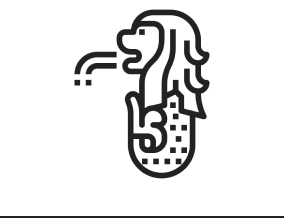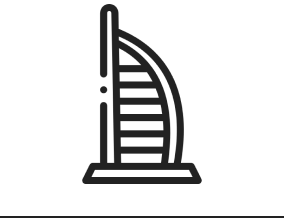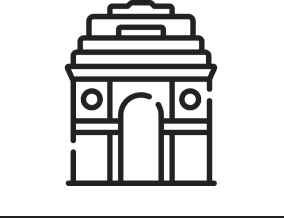Does guesswork drive critical decision-making processes in your hotel business?
Do you struggle to anticipate fluctuations in demand?
Forecasting the hotel demand can leave even the most experienced hoteliers feeling overwhelmed. However, there’s a powerful solution that has transformed the way successful hotels operate – demand forecasting.
We will discuss the types of forecasting a hotel needs, factors that impact their whole business, and, most importantly, challenges they might face during scaling up.
So, let’s dive in!
Types of Forecasting Hotels 7 Hospitality Industry Need
There are three main types of forecasting hotels do, and they prepare themselves beforehand.
Operational Forecasting
Operational forecasting focuses on the hotel’s daily routine operations. This ensures that the appropriate availability of staff must be considered in each department to accommodate the predicted guest volume.
Here, variables like the total manpower needed for different hotel operations, the number of guests expected at the reception area, and the number of diners needed for each meal are taken into consideration.
Financial Forecasting
Anticipating subsequent profits and costs is crucial for predicting the future financial condition of a hotel. This method aims to project forthcoming revenue as well as expenditures. Hence, it is more essential for those facilities that have major fluctuations in their number of customers during certain times of the year.
Precise projections of earnings versus spending enable hotels to plan their pricing policies, determine their manpower sentiment, and appropriate the use of resources to achieve maximum profit.
Revenue Management Forecasts
This gives an idea of how many rooms are likely to be booked and the cost implications based on historical booking information, upcoming events, and prices charged by other hotels with similar features.
This is what helps firms set the right prices that will ensure all rooms are occupied, hence increasing revenue without giving out rooms at poor prices that would not attract clients.
Factors That Influence Hotel Demand Forecasting
Observe and Examine Past Data
Examine historical booking data to discover trends and patterns in hotel pricing, guest demographics, and occupancy rates. This data makes it easier to forecast how much people might need in the future.
Seasonality is a Business Thing
Seasonal changes bring fluctuations in the demand for hotel rooms. The coast has more demand for hotels during the summer, while ski resorts get more bookings during the winter. Understanding seasonal patterns helps in better predicting future demand for the hotel.
Special Events Impact Demand
Conferences, conventions, and festivals, as well as other social gatherings, have an immense effect on hotel room reservations. It is crucial for these hospitality venues to properly plan for bookings by closely following upcoming events in their locality.
The Economic State of a Country Matters
Under optimal economic conditions, travel and accommodation levels usually increase, while a bad economy may lead to lesser demands for travel, trips, and accommodation. When it comes to predicting future business patterns, hotels would have to track various economic indicators of their country because the economy directly impacts businesses like tourism and hospitality.
Closely Monitor your Competitor’s Activities
Your hotel’s demand can be affected largely by competitive pricing and promotions. If your competitor is considering changes in pricing, then you have to take into account what prices they are offering to their customers. For hotels to remain competitive in their business and for better survival, it is necessary to monitor what their competitors are doing.
Other Factors Also have an Impact
Weather patterns, political turmoil, and social media trends are some of the other important factors that can shape hotel demand. More accurate estimates may be made by hotels if they incorporate these factors into their planning strategies.
5 Major Challenges in Hotel Demand Forecasting
- Unforeseen Circumstances: Although natural disasters, political instability, or global pandemics cannot be predicted, they can still happen and disrupt the best predictions, including those related to travel patterns, by greatly influencing travel patterns.
- Data Overload and Analysis: Hotels create and maintain a lot of data each time, but it can be difficult to understand and extract useful information from it. Without proper analysis, data overload makes accurate forecasting hard.
- Temporary vs. Long-Term Reliability: It is often easier to predict long-term trends than it is to anticipate short-term spikes or troughs in a market. It becomes hard to capture sudden changes in bookings and last-minute travel plans.
- Technology’s Versatile Weapon: Despite offering excellent forecasting possibilities, it may at times ignore very significant human aspects if exclusively relying on algorithms. It is impossible to overemphasize the necessity of the correct proportion between numbers and professional judgment.
- Hotel Characteristics: Large franchise businesses might benefit from uniform forecasting models, while smaller, private hotels encounter local affairs or niche markets, which require a more customized method of operation.
Best Hotel Demand Forecasting Solution
Predicting hotel demand is very complex and quite hard but it is essential for any hotel business. This gives reasons why hotels should understand factors that influence demand as well as the challenges they face so that they can project accurately and make informed decisions that lead to profit making.
Replan is a smart hotel planning solution for hotel demand forecasting. In addition, it covers issues of payroll, staff requirements, and summary financial reporting necessary for an adequate hotel operation.
Hotels should consider using REPLAN as a tool for getting an across-the-board view of what is happening across their hotels and this puts them in a position to drive improvements that should lead to more money being made, decreased expenses, as well as the bigger goal of the company.






